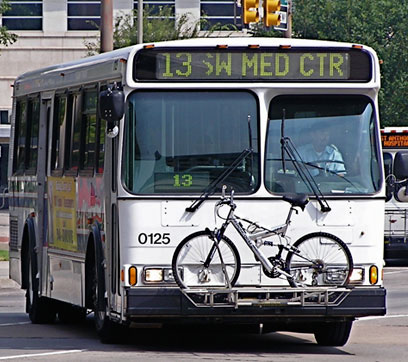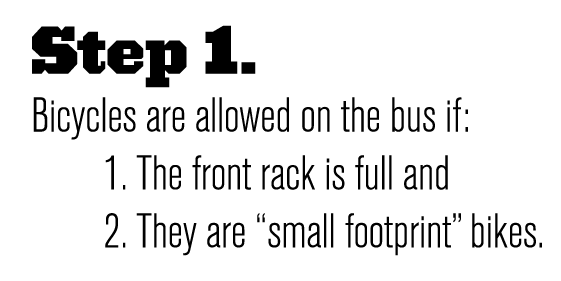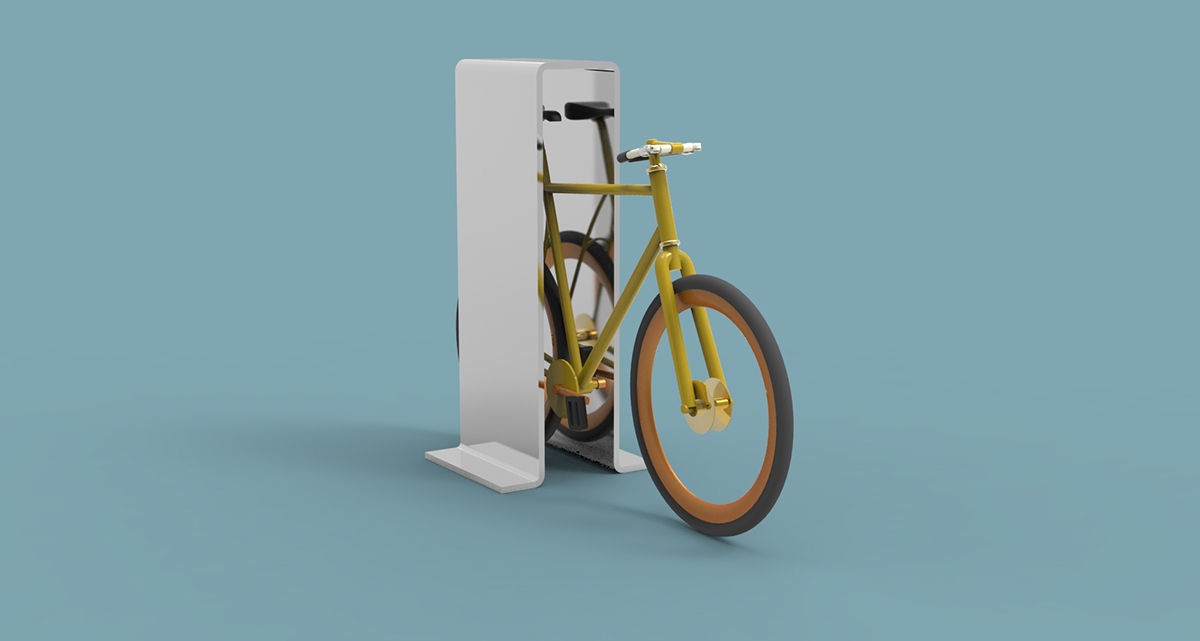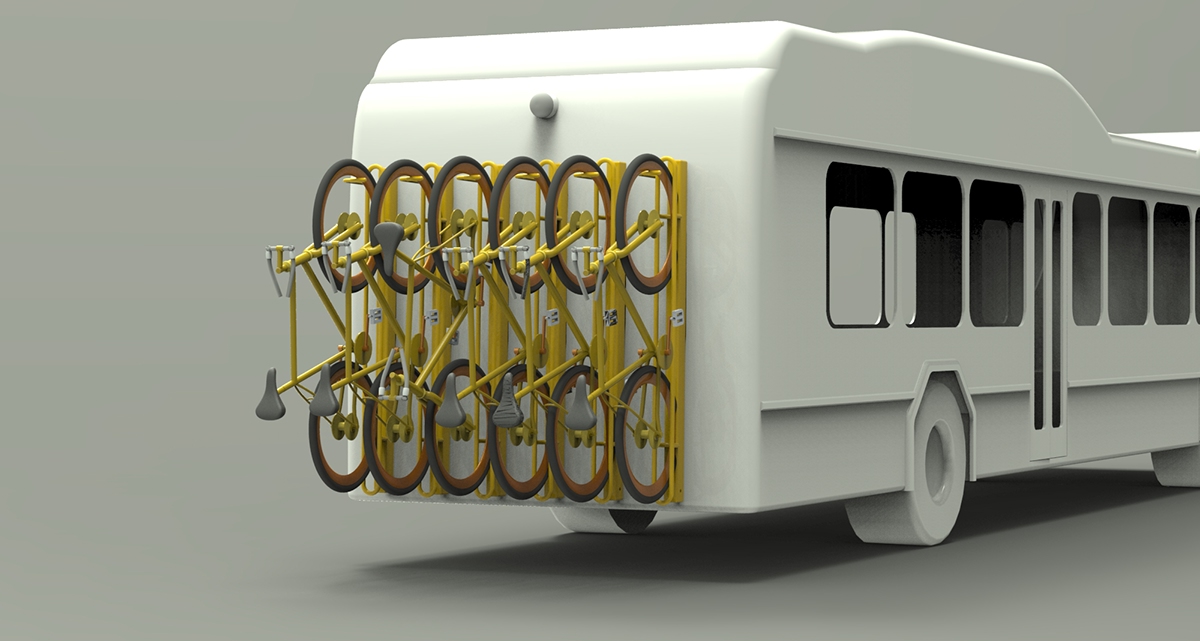Transit agencies benefit from Bikes on Buses (BOB) programs in a number of ways. 65% of BOB users report using transit more than 4 times per week. 1 in 4 BOB users is new to transit. Of these 80% said BOB services were the reason for the change. A few of the benefits of multi modal transportation are increased service area, bringing new riders to public transportation, and increasing frequency of established ridership.
"61% of BOB users travel more than1 mile to access transit..."

“...however, with a limit of 2 bikes per bus, sustained growth of the program is limited.”
My project began by seeing the shortcomings of current BOB programs. These programs have become increasingly popular in the past several years and are allowing more users to increase their range and use of public transportation. In my research I found that the ROI for transit agencies is very high regarding the BOB programs. Although the service is more effective in less dense areas where buses travel longer distances between stops. These routes are more likely to be used by commuters. When it comes to bringing bikes on the bus folding bicycles are always ok, and full size bikes are sometimes ok if the racks are full. My project focus changed from finding one, best solution, to three steps of progress toward gradually increasing the capacity of bikes on buses and trains:

The best folding bike, is your bike.



Folding handlebars and folding pedal sets could be subsidized by transit agencies to keep the cost down and to encourage commuters to adapt “small footprint” bicycles. Bicycle component manufacturers unveil new folding handlebar designs and begin packaging pedals and handlebars for sale at independent bicycle retailers. With a low cost and a high return for the user (guaranteed spot on the busy commuter bus) adoption rates will be high.



A rear mounted rack with 12 inch spacing would accommodate 6 bikes on the back of the bus. The racks would fold or pivot down to ease access and have an assist to bring the bicycle up to a vertical position. These racks could carry full size bikes as well, but transit agencies might want to consider enforcing a “small footprint” only rack to encourage the most density possible for rear storage. The bus would be equipped with a rear camera and a driver activated lock to prevent bicycles from being unloaded or loaded at their discretion.







American city buses haven't been redesigned since the Americans with Disabilities Act transformed fleets of step up buses to wheel chair accessable low floor models. With the popularity of bikes on buses programs, redesigning the bus to accommidate this behavior is a necessary next step.
By moving the wheels in front of the door, the floor plan of the bus is not restricted. The driver seat is moved to the center to improve visibility and utilize the space between wheel wells. This configuration would improve loading and unloading of bicycles and still leaves room for a 2 standard bike front rack.

As proof of concept and to show the mechanics of the folding handlebar, I 3D printed a model and bonded it into a bicycle handlebar. Folding of the handlebar requires no tools and with a sloted pivot the bar tightens into a reinforced locked position.







